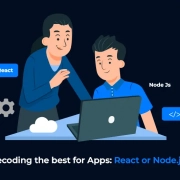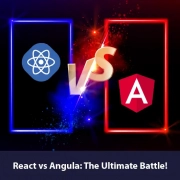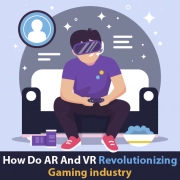What is Blockchain Technology and Cryptocurrency?
Quick Summary: This blog will give you all ideas about Blockchain technology and Cryptocurrency. You will also read about all the terms of Blockchain and Crypto. So, read on and increase your knowledge.
Introduction
Blockchain technology and Cryptocurrency, a dynamic duo of innovation, are reshaping the finance landscape and digital interactions.
Imagine a society where transactions are open, safe, and intermediary-free. It is the promise of blockchain—A tamper-proof and unalterable decentralized digital ledger that records every transaction.
Know more about What Is Decentralized Finance?
In addition, Cryptocurrency, on the other hand, manifests this revolutionary technology—an entirely digital form of money that transcends borders and empowers individuals with financial autonomy.
Further, Together, they challenge conventional notions of trust, efficiency, and control. It is ushering in an era where financial empowerment is at your fingertips.
Tour this newest financial term and learn how the Blockchain Development business works
What Is Blockchain Technology?
Nodes of a computer network share a distributed database known as Blockchain Technology. As a database, Blockchain Technology stores data in digital format. We cannot modify or rewrite data on blockchain technology, making it acceptable for industries for payments, cybersecurity, healthcare, economically.
History
- 2000
Stefan Konst publishes his theory on cryptographic chains, as well as ideas for implementation. - 2008
The engineer (s) working under the pseudonym Satoshi Nakamoto released a white paper launching a blockchain model. - 2009
Nakamoto uses the first blockchain as a public ledger for transactions made using bitcoin. - 2014
Blockchain technology separates from money and tests its potential in other currencies through joint transactions, giving rise to Blockchain 2.0, which refers to over-the-counter applications.
Nodes
One of the most essential ideas in blockchain technology is distribution. No single computer or organization can own a series. Instead, nodes connected to a chain distribute a ledger. Nodes can be any electronic device that stores blockchain copies and keeps the network running.
Blocks
A series of data groups form the basis of blockchain network operations, grouping into “blocks” that are in sequence. Each block additionally contains a set of activity data processed upon block completion. Single blocks construct a large blockchain that includes essential information for network performance. Cryptographically verified transaction data and a numerical challenge that requires completion are included in each new block for approval and addition to the blockchain. Here, we will explore the anatomical block structure in the Bitcoin blockchain and the relevant roles of each of its components.
Use of Blockchain Technology
- Payment processing and money transfers
- Monitor supply chains
- Retail loyalty rewards programs
- Data sharing
- Digital voting
- Equity trading
- Securing access to belongings
- Managing Internet of Things networks
What is Cryptocurrency?
Cryptocurrency is a digital platform that uses encryption and distribution systems. Unlike the U.S. Dollar or Euro, no central authority manages and maintains a cryptocurrency value. Instead, these functions are still widely distributed among cryptocurrency users online.
You can use crypto to buy common goods and services, although many people invest in cryptocurrencies as they would in other assets, such as stocks or commodities. Although cryptocurrency is a novel and exciting asset class, buying it can be risky as you have to do a lot of research to fully understand how each system works.
The Ethereum blockchain system introduces computer programs to blocks, representing financial instruments such as bonds. These are known as smart contracts.
What Are Tokens?
The term crypto token refers to a token of a virtual currency or cryptocurrencies. These tokens represent fungible and marketable assets or services on their blockchains.You can raise money by selling Crypto tokens to crowds, and they can also serve as part of a larger package. Additionally, You can distribute tickets through the typical first cash donation process (ICO), which involves raising large sums of money to fund project development.
What is the purpose of tokens?
Crypto tokens can represent an investor’s portfolio in a company or can serve an economic purpose, such as a legal tender. This means that token holders can use them to buy or trade tokens like other securities for profit.
What is decentralization?
In the blockchain, segmentation refers to the transfer of control and decision-making from a central organization (individual, organization, or group) in a distributed network. Established networks strive to reduce the level of trust that participants must have in each other, and restrict their ability to exercise authority or control each other in ways that reduce network performance.
Why does decentralization matter?
When building a new technology solution, you must consider three primary network architectures: centralization, distribution, and decentralization. Blockchain technologies use decentralized networks, and blockchain applications cannot be classified as decentralized. You can apply decentralization to all aspects of a blockchain application as it exists on a sliding scale. Decentralization typically has some tradeoffs, such as lower transaction throughput, but ideally, the tradeoffs are worth the improved stability and service levels they produce.
What is Blockchain mining?
A peer-to-peer computer system, Blockchain mining is used to protect and secure bitcoin transactions. The mining includes Blockchain miners who add bitcoin transaction data to the Bitcoin public domain worldwide for past transactions. For ledgers, blocks are secured by Blockchain miners and are connected forming a chain.
In contrast to traditional financial services systems, Bitcoins have no centralized clearing. People usually verify Bitcoin transactions in decentralized programs, dividing them into areas where they donate computer services to ensure security. This process, known as mining, likely draws its name from gold mining, which demands significant effort and resources, yet yields a limited annual gold output. Similarly, Bitcoin mining consumes substantial computer power.
The amount of bitcoins produced in mining is declining over time. In the words of Satoshi Nakamoto, there is a limited supply of bitcoins.
Top Blockchains Technology
- Ethereum (ETH)
- Solana (SOL)
- Tron (TRX)
- Litecoin (LTC)
- Cardano (ADA)
- Polkadot (DOT)
- Avalanche (AVAX)
- Polygon (MATIC)
Top Crypto Companies
A list of the biggest crypto companies and top public crypto companies
- Binance
- Ripple
- CoinBase
- Bittrex
- BitPay
- PayPal
- Bitfinex
Conclusion
So, blockchain technology and Cryptocurrency have ignited a transformative wave. Additionally, this wave is revolutionizing how we conduct transactions, store data, and envision financial systems. Further, these eliminate intermediaries and foster transparency; blockchain ensures trust in an increasingly digital world. So, take a moment, become a part of this transforming motion, and help shape a more connected and inclusive society.
FAQ
Is Blockchain technology the future?
Yes it’s a very bright one to say. Statistics have it that by 2026 the blockchain technology will have facilitated nearly four hundred billion dollars in economic value. I have estimated that by 2030 this number will be greater than 3. 1 trillion. Block chain will be a major force in the future in the coming decades.
How blockchain technology works?
Blockchain can be defined as a shared electronic record which is also known as a ledger and it is not regulated by any centralized authority. It does this in the form of blocks that are packed with some transactions into a structure that verifies all transactions cryptographically attached sequentially into a chain. Each block in the series should have the information regarding transaction and Hash code value of the previous block henceforth called data of every block.
Cryptos involved include a network of different participants where each verifier validates the transaction in a decentralized network through a process also known as a Consensus Mechanism such as the Proof of Work or Proof of Stake Mechanism to ensure that the transaction does not take place fraudulently. Then the block is closed and serves as a part of the chain which is subsequently recorded as a stable status.
This is a decentralized approach that does away with the middlemen therefore saving costly expenses and improving effectiveness. It has various practical uses such as in cryptocurrencies, supply chain, and also smart contracts and is a useful way for validating and recording their records.
Which blockchain technology is best?
Ethereum is one of multiple technologies that are associated with intelligent contracts and decentralized apps and has a loyal developer base and a wide variety of projects.
Who is using blockchain?
Such industries and sectors include but are not limited to finance, supply chain management, healthcare, real estate, etc Utilize Blockchain technology. It is a reliable and effective way to store data and verify transactions, which helps to improve the processes and build trust as well as introduce new solutions.
How do people start a blockchain startup?
In the traditional Blockchain development arena, a process typically comprises several stages. Next, choose a certain issue or an absence of a certain processes that can be resolved by using the blockchain technology. Pursue a thorough market research to understand potential demand and competition. Then, hire talented employees versed in other industries, cryptography, and building the blockchain environment—raise capital from corporate investors, collect financing from the people, or get network grants to expand the business. Design a clear and comprehensive whitepaper outlining the project’s goals, technical details, and potential benefits.
Create a minimal viable product (MVP) to show the concept’s viability and attract early adopters. Engage with the blockchain community, attend relevant events, and establish partnerships to expand the startup’s network. Lastly, iterate and refine the product based on feedback, market trends, and technological advancements while navigating regulatory and legal considerations in the blockchain space.













